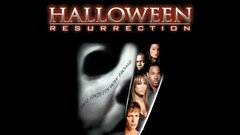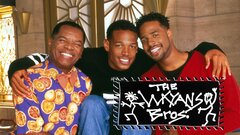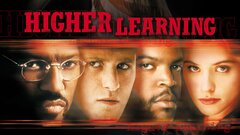Busta Rhymes
Credits

99th Macy's Thanksgiving Day Parade
Music Performer
Show
2025

99th Macy's Thanksgiving Day Parade- High Rise View
Music Performer
Show
2025

99th Macy's Thanksgiving Day Parade- Float View
Music Performer
Show
2025

MTV Video Music Awards
Music Performer
Awards
2025

Big City GreensStream
Guest Voice
Series
2025

The Naked GunStream
Actor
Bank Robber
Movie
2025

Piece by PieceStream
Voice
Self
Movie
2024

The 65th Annual Grammy Awards
Music Performer
Show
2023

BET Awards 2022: An All-Star Tribute to Lifetime Achievement Honoree Diddy
Music Performer
Show
2022

Busta Rhymes: Fire
Music Performer
Show
2022

Busta Rhymes Feat. Janet Jackson: What's It Gonna Be?! (feat. Janet Jackson)
Music Performer
Show
2022

Busta Rhymes: Woo Hah!! Got You All In Check (Remix)
Music Performer
Show
2022

Vibe: 2000's Rap Hits
Music Performer
Show
2022

Behind the MusicStream
Self
Docuseries
2021

Busta Rhymes: Outta My Mind
Music Performer
Show
2021

Busta Rhymes Feat. CJ, M.O.P.: Czar (Remix)
Music Performer
Show
2021

Retro: Night in Hollywood
Music Performer
Show
2021

Busta Rhymes: Where I Belong
Music Performer
Show
2021

Busta Rhymes: Czar (Remix)
Music Performer
Show
2021

Rap Dads
Music Performer
Show
2021

00's Summer Hits
Music Performer
Show
2021

Back To School Rap
Music Performer
Show
2021

Busta Rhymes & Rick Ross: Master Fard Muhammad
Music Performer
Show
2020

Busta Rhymes & M.O.P.: Czar
Music Performer
Show
2020

Vibe: Millenium Hip-Hop
Music Performer
Show
2020

Busta Rhymes: Czar
Music Performer
Show
2020

Busta Rhymes: Master Fard Muhammad
Music Performer
Show
2020

Busta Rhymes: Boomp
Music Performer
Show
2020

The Kelly Clarkson Show
Guest
Talk
2019

Tamron HallStream
Guest
Talk
2019

Desus & Mero
Guest Star
Show
2019

'94 Hip-Hop
Music Performer
Show
2019

RememberingIcons
Music Performer
Show
2019

Celebrating Life
Music Performer
Show
2019

Greatest Rappers 3
Music Performer
Show
2019

Vibe: Hip-Hop Classics Vol.II
Music Performer
Show
2019

Official: Best 00s R'n'B Collabs
Actor
Show
2018

Winners Circle
Music Performer
Show
2018

RIP Craig Mack
Music Performer
Show
2018

Motivate ME!
Music Performer
Show
2018

BEST Swizz-BEATS
Music Performer
Show
2018

Bad Boy Hip-Hop
Music Performer
Show
2018

Diddy's Top 10
Music Performer
Show
2018

Survivors Guide to Prison
Self
Movie
2018

The 40th Annual Kennedy Center Honors
Music Performer
Show
2017

A$AP Ferg Feat. Busta Rhymes, A$AP Rocky, Dave East, French Montana, Rick Ross & Snoop Dogg: East Coast REMIX
Music Performer
Show
2017

Busta Rhymes Feat. J Doe, O.T. Genasis: God's Plan
Music Performer
Show
2016

King of the Dancehall
Actor
Allestar 'All Star Toasta'
Movie
2016

Pharrell & Friends
Music Performer
Show
2015

Fresh Off the BoatStream
Guest Star
Himself
Series
2015

The Nightly Show With Larry WilmoreStream
Guest
Talk
2015

Glastonbury
Music Performer
Show
2014

The Tonight Show Starring Jimmy FallonStream
Music Performer
Talk
2014

O.T. Genasis Feat. Busta Rhymes & French Montana: Touchdown (Remix)
Music Performer
Show
2014

Mack Wilds Feat. Busta Rhymes, French Montana, and Mobb Deep: Henny (Remix)
Music Performer
Show
2014

Mack Wilds Feat. French Montana, Mobb Deep & Busta Rhymes: Henny (Remix)
Music Performer
Show
2014

Time Is Illmatic
Actor
Movie
2014

Busta Rhymes Feat. Nicki Minaj: TwerkIt
Music Performer
Show
2013

Busta Rhymes Feat. Kanye West, Lil Wayne, Q-Tip: Thank You
Music Performer
Show
2013

Busta Rhymes: Thank You
Music Performer
Show
2013

Busta Rhymes Feat. P. Diddy & Pharrell: Pass the Courvoisier Part II (Long Version)
Music Performer
Show
2013

Busta Rhymes Feat. Chris Brown: Why Stop Now
Music Performer
Show
2012

Lil Twist Feat. Busta Rhymes: Turn't Up
Music Performer
Show
2012

Ashanti Feat. Busta Rhymes: The Woman You Love
Music Performer
Show
2012

Dish Nation
Guest
Talk
2011

Chris Brown Feat. Lil Wayne & Busta Rhymes: Look At Me Now
Music Performer
Show
2011

Chris Brown feat. Lil Wayne & Busta Rhymes: Look At Me Now (Explicit)
Music Performer
Show
2011

Travis Barker Feat. Busta Rhymes, Twista, Yelawolf: Let's Go
Music Performer
Show
2011

Styles P Feat. Rick Ross, Busta Rhymes: Harsh
Music Performer
Show
2011

DJ Khaled: Welcome To My Hood
Music Performer
Show
2011

DJ Khaled Feat. Busta Rhymes, RIck Ross, & T-Pain: All I Do Is Win (Remix)
Music Performer
Show
2010

The Project
Guest
Show
2009

Feel the Beat
Music Performer
Show
2009

Late Night With Jimmy Fallon
Music Performer
Talk
2009

Busta Rhymes: Arab Money
Music Performer
Show
2009

Busta Rhymes Feat. Ron Browz: Arab Money
Music Performer
Show
2009

Busta Rhymes Feat. Estelle: World Go Round
Music Performer
Show
2009

Bone Crusher Feat. Cam'ron, Jadakiss and Busta Rhymes: Never Scared (Remix)
Music Performer
Show
2009

Busta Rhymes Feat. T-Pain: Hustler's Anthem 09
Music Performer
Show
2009

Busta Rhymes Feat. Ron Browz: Arab Money
Music Performer
Show
2009

Capone-N-Noreaga Feat. Busta Rhymes, Ron Browz: Rotate
Music Performer
Show
2009

Breaking Point
Actor
Al Bowen
Movie
2009

Kat DeLuna Feat Busta Rhymes: Run The Show
Music Performer
Show
2008

Gym Class Heroes Feat. Busta Rhymes: Peace Sign / Index Down
Music Performer
Show
2008

Busta Rhymes Feat. Linkin Park: We Made It
Music Performer
Show
2008

Busta Rhymes: Don't Touch Me (Throw the Water on 'Em)
Music Performer
Show
2008

Grafh Feat. Busta Rhymes, Prinz: Like Ohh
Music Performer
Show
2008

T.I. Feat. Alfamega, Busta Rhymes: Hurt
Music Performer
Show
2007

DJ Khaled Feat. Busta Rhymes, Young Jeezy, Ludacris: I'm So Hood (The Remix)
Music Performer
Show
2007

Busta Rhymes Feat. Rick James: In The Ghetto
Music Performer
Show
2006

Busta Rhymes: I Love My Chick
Music Performer
Show
2006

Busta Rhymes: Touch It
Music Performer
Show
2006

Busta Rhymes: New York S...
Music Performer
Show
2006

Busta Rhymes: In the Ghetto
Music Performer
Show
2006

Robin Thicke Feat. Busta Rhymes, Pharell: Wanna Love You Girl (Remix)
Music Performer
Show
2006

Pussycat Dolls Feat. Busta Rhymes: Don't Cha
Music Performer
Show
2005

The Pussycat Dolls Feat. Busta Rhymes: Don't Cha
Music Performer
Show
2005

M.O.P. Feat. Busta Rhymes, Teflon & Remy Martin: Ante Up Remix
Music Performer
Show
2004

Busta Rhymes & Spliff Star: Make It Clap (Alternate Version)
Music Performer
Show
2004

Full ClipStream
Actor
Pope
Movie
2004

Jimmy Kimmel Live!Stream
Music Performer
Talk
2003

Busta Rhymes Feat. Sean Paul & Spliff Starr: Make It Clap (Remix Video)
Music Performer
Show
2003

Busta Rhymes Feat. Pharrell: Light Your A... On Fire
Music Performer
Show
2003

Busta Rhymes & Mariah Carey Feat. The Flipmode Squad: I Know What You Want
Music Performer
Show
2002

Sean Paul Feat. Busta Rhymes: Gimme the Light
Music Performer
Show
2002

Busta Rhymes Feat. Spliff Star: Make It Clap
Music Performer
Show
2002

Wyclef Jean Feat. Busta Rhymes: Pussycat (Remix)
Music Performer
Show
2002

Busta Rhymes & Mariah Carey Feat. Flipmode Squad: I Know What You Want
Music Performer
Show
2002

All Star Weekend
Actor
Movie
2002

Halloween: ResurrectionStream
Actor
Freddie Harris
Movie
2002

NarcStream
Actor
Beery
Movie
2002

Busta Rhymes: Break Ya Neck
Music Performer
Show
2001

106 & Park: BET's Top 10 Live
Actor
Show
2000

ShaftStream
Actor
Rasaan
Movie
2000

Finding ForresterStream
Actor
Terrell
Movie
2000

The Daily Show With Jon StewartStream
Guest
Talk
1999

Ja Rule Feat. Busta Rhymes & Memphis Bleek: Holla Holla (Remix)
Music Performer
Show
1999

The Mod SquadStream
Original Music
Movie
1999

Les Razmoket, le film
Original Music
Movie
1998

The Rugrats Movie
Original Music
Movie
1998

The Rugrats Movie
Voice
Reptar Wagon
Movie
1998

The View
Guest
Talk
1997

Puff Daddy And The Family Feat. Busta Rhymes & The Notorious B.I.G.: Victory
Music Performer
Show
1997

Busta Rhymes: Put Your Hands Where My Eyes Could See
Music Performer
Show
1997

Diddy Feat. Busta Rhymes: Victory
Music Performer
Show
1997

Diddy Feat. Busta Rhymes, The Notorious B.I.G: Victory
Music Performer
Show
1997

Cosby
Guest Star
Series
1996

The Steve Harvey ShowStream
Guest Star
Series
1996

The Chris Rock ShowStream
Guest
Talk
1996

The Wayans Bros.Stream
Guest Star
Series
1995

Higher LearningStream
Actor
Dreads
Movie
1995

Space Ghost Coast to CoastStream
Guest
Series
1994

Craig Mack Feat. Busta Rhymes, LL Cool J, & the Notorious B.I.G.: Flava in Your Ear (Remix)
Music Performer
Show
1994

Craig Mack Feat. The Notorious B.I.G., LL Cool J, Rampage & Busta Rhymes: Flava in Ya Ear (Remix)
Music Performer
Show
1994

RugratsStream
Guest Voice
Reptar Wagon
Series
1991

Good Morning America
Music Performer
News
1975

Saturday Night LiveStream
Music Performer
Series
1975

Top of the Pops
Music Performer
Series
1964




















